How to Decorate a Living Room With Style
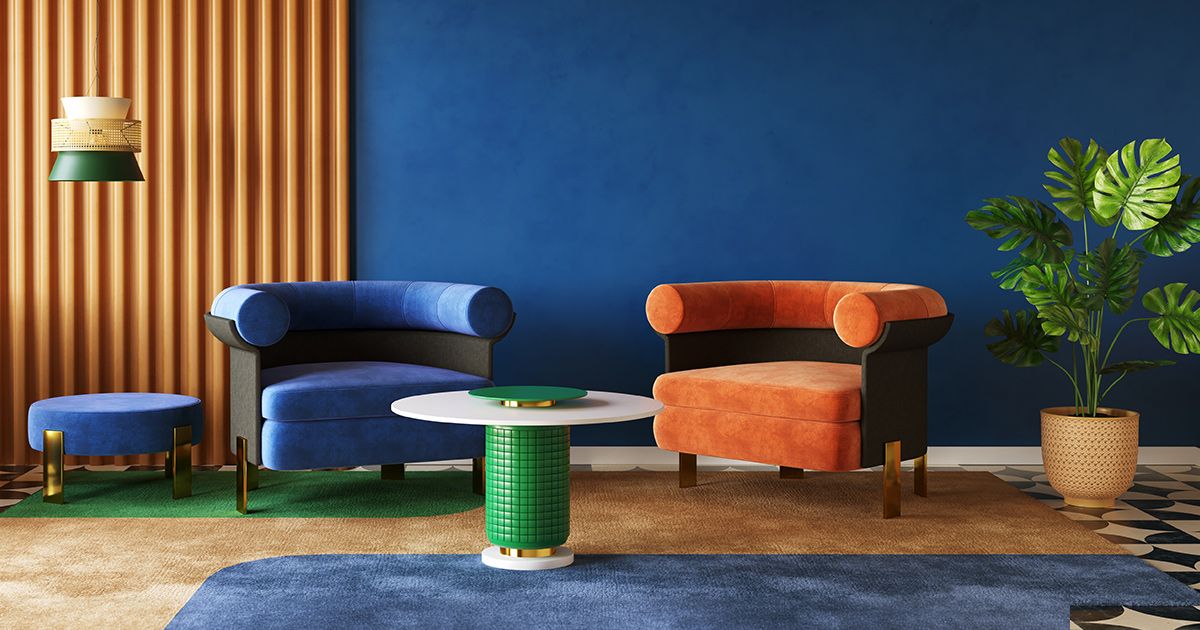
Discover how to decorate your living room with style: from furniture selection to color choices. Turn your space into a cozy and inviting place.
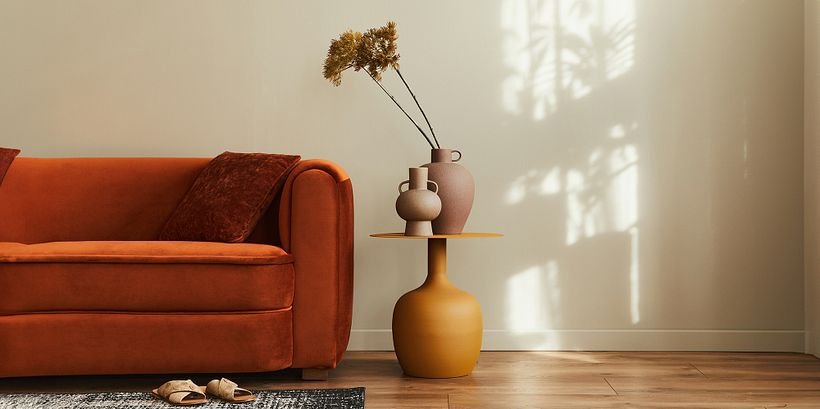
Decorating a living room can be an exciting challenge, full of possibilities and decisions. In our article, we offer you a step-by-step guide that covers everything from selecting furniture to choosing a color palette. With practical tips and inspiring examples, we'll help you create a space that is not only aesthetically appealing, but also functional and welcoming both to you and those you love.
Choosing the style
When decorating and designing spaces, one of the most important decisions is selecting the style we want to follow. The style you select for decorating will reflect your personality and tastes, as well as define the atmosphere and ambiance of your space. There are a wide variety of interior design styles, from classic and traditional to modern and minimalist. Each style has its own aesthetic and distinctive characteristics, and it is essential to find the one that fits your desires and needs.
· Nordic Style
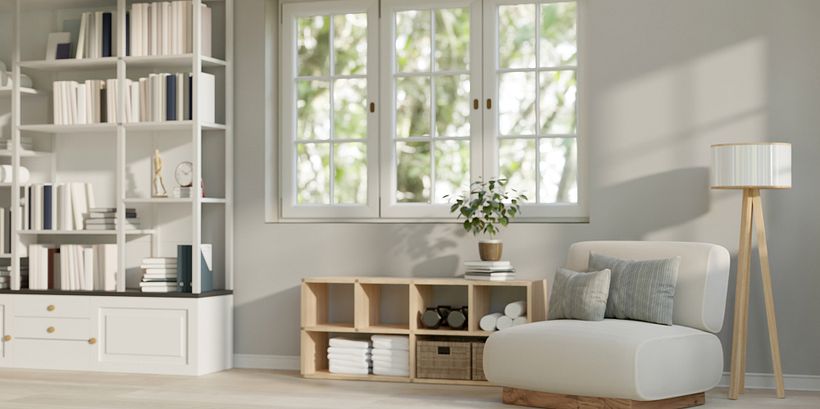
Nordic style is known for its elegance and simplicity. Light colors, such as white and pastel tones, are usually used in elements such as walls and furniture. These colors provide a feeling of greater spaciousness and brightness in interior spaces.
Natural wood furniture is another distinctive feature of the Nordic style. It seeks to highlight the beauty of wood and its natural texture, opting for simple and functional designs. Furniture is typically straight-lined and without excessive ornaments, which contributes to the feeling of order and cleanliness.
As for textiles, cotton, linen, and wool are the preferred materials in this style. These soft and natural fabrics bring warmth and comfort to the spaces. They are used in rugs, curtains, blankets and cushions to add texture and contribute to a cozy atmosphere.
Geometric motifs are also common. Patterns can be found in textiles, wallpaper, or even decorative accessories. These designs add a touch of modernity and dynamism to environments.
Finally, this style is characterized by the search for a practical and functional space. Simplicity and the absence of superfluous elements are valued. The furniture usually has integrated storage systems and seeks to maintain a visual order in each environment.
· Classic Style
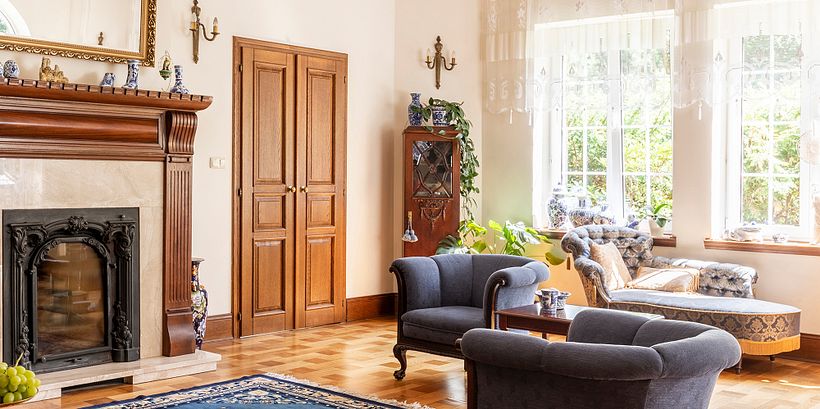
The classic style is a style of decoration that stands out for its elegance and sophistication. Its baroque influence is reflected in the ornamentation and curved details present in furniture and ornaments.
As for the tones used, the most popular are cream, as they bring a sense of light and spaciousness to the environments. These soft and warm tones create a cozy and harmonious atmosphere.
Furniture is usually made of noble materials such as cherry wood, walnut, or mahogany, some of the most valued woods in this style. These are commonly ornamented with curved, carved and gilded details, which give them a luxurious and refined look.
When it comes to ornaments, porcelain plays an important role in classic decor. Chandeliers and mirrors are also characteristic elements of this style, adding a touch of glamour and sophistication.
For fabrics, it is recommended to use natural fabrics such as velvet or silk for cushions and curtains, which provide a pleasant and luxurious feel. These are generally of soft colors and classic prints, which perfectly complement this style.
· Minimalistic Style
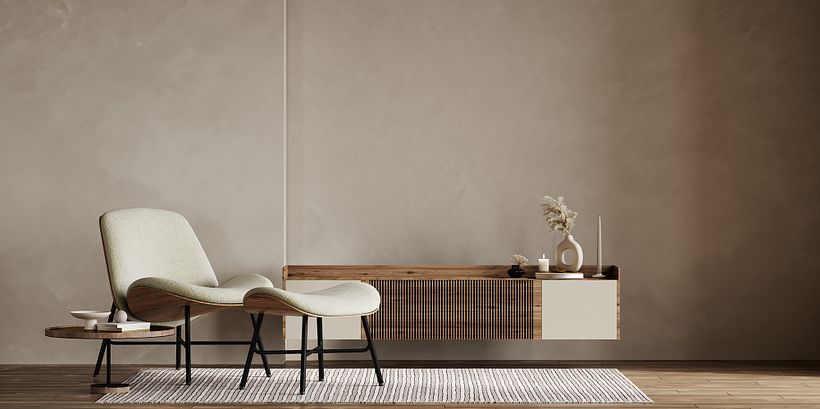
Minimalist style is an interior design trend characterized by its simplicity, cleanliness, and functionality. It is based on eliminating everything unnecessary and keeping the essential, creating uncluttered and organized spaces.
It uses neutral colors, such as white, gray, and beige. These colors help to create a feeling of spaciousness and brightness in the spaces.
It also uses straight lines and simple geometric shapes. These lines bring order and structure to the design, creating a modern and sophisticated aesthetic.
In the minimalist style, excessive ornaments and decorative elements are avoided. Spaces are kept uncluttered and free of unnecessary objects, contributing to a sense of calm and order.
· Rustic Style
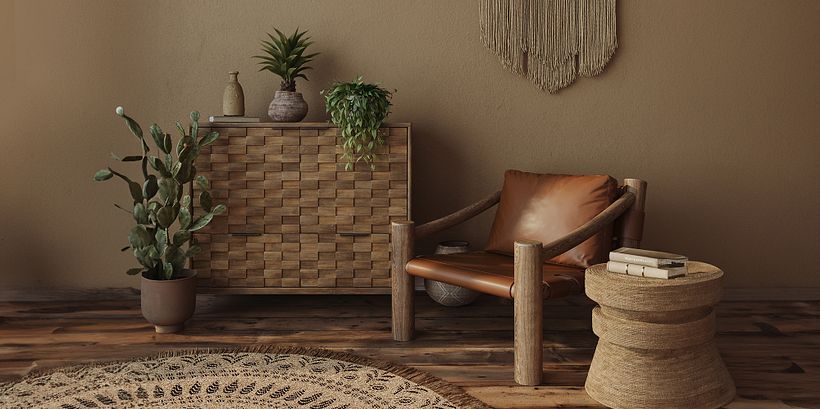
The rustic style is characterized by the use of natural materials such as wood and stone, creating a cozy atmosphere. The warm colors and earth tones are also protagonists in this decorative style.
Rustic furniture usually has a worn and aged look, adding a touch of authenticity and nostalgia to the decoration. In addition, decorative elements such as wooden beams on the ceilings and exposed stone walls can be incorporated, adding a traditional charm to the spaces.
Wood and stone are the star materials, which create a sense of connection with nature and a cozy atmosphere. Warm colors such as brown, ocher, and terracotta are very common in this type of decoration and provide warmth and visual comfort.
What Colors to Choose for Your Living Room?
When it comes to choosing colors for interior decoration, it is important to consider several aspects. Colors have the power to influence one's mood, so it is essential to select shades that convey the desired feelings. In addition, it is essential to take into account the style and personality of the room you want to decorate. Each color has its own meaning and can create different atmospheres in the space. From neutral tones, which bring tranquility and elegance, to vibrant colors, which bring energy and vitality, the right choice of colors can make all the difference in the ambiance of a room.
· Light Colors
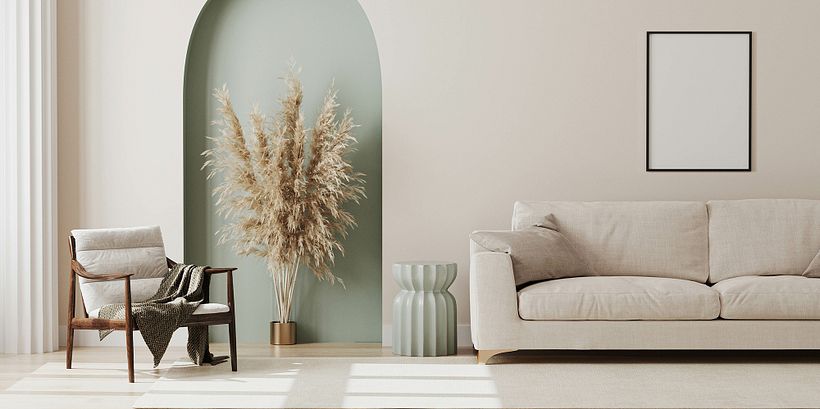
Light colors are an excellent choice for decorating a living room, as they bring important benefits to this space. Their hue helps to visually expand the space, creating a feeling of spaciousness and brightness. By reflecting more light, light colors make the walls and ceiling appear more distant, which is ideal for small living rooms or those with low ceilings.
In addition, light colors help to create a warm and relaxing atmosphere. Shades such as beige or cream convey tranquility and peace and invite you to enjoy moments of rest and relaxation in the living room. This feeling of calm is enhanced by the use of materials and fabrics that are soft to the touch, such as wool or cotton.
To add personality and prevent the living room from looking too monotonous, circular elements can be incorporated into the decoration. These types of shapes soften the straight lines and add dynamism to the space. For example, you can include round cushions, lamps or circular mirrors.
· White
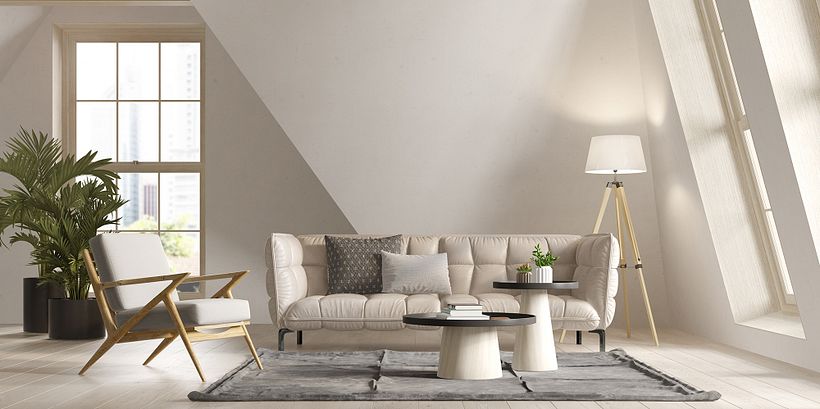
White is a popular choice in decorating a dining room because of its many advantages. With its clean, bright appearance, white can make any space appear larger and airier. Painting the walls with this color creates the optical illusion of spaciousness, which is especially beneficial in smaller dining rooms.
The versatility of white allows you to mix and match furniture in any color, giving you the freedom to change your decor to suit your taste and preferences. From vibrant, eye-catching furniture to more classic, subtle pieces, white provides a neutral canvas that complements any decorating style.
In addition to visually expanding the space, white also helps to take advantage of and enhance the natural light that enters the room. A room with good access to outside light can look even brighter and cozier with white walls. This enhances the feeling of warmth and spaciousness, creating a pleasant, bright environment to enjoy throughout the day.
· Bright Colors
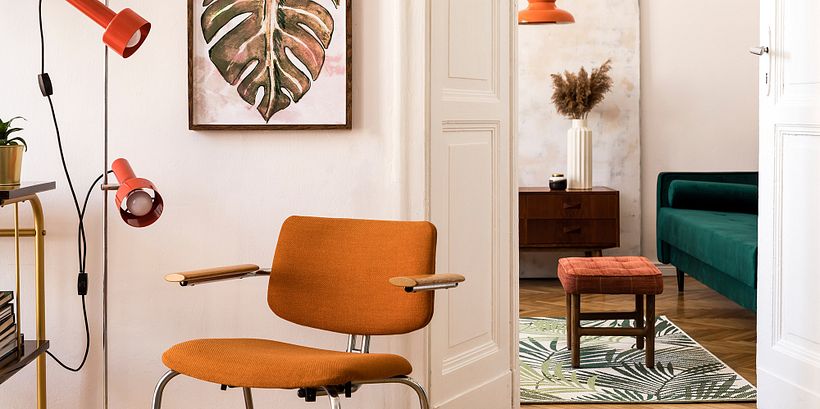
The use of bright colors in the decoration of a living room can add a dose of energy and vitality. For example, yellow is a vibrant color that conveys optimism and joy, while integrating well with other colors.
It is important to keep in mind that the use of bright colors in decorating requires careful planning and balance. You can combine bright colors with neutral tones to avoid making the room look overwhelming or cluttered. In addition, it is advisable to add decorative elements in complementary or contrasting colors to achieve a cohesive and harmonious look.
Choosing Essential Furnishings
Choosing the essential furniture for your living room can be an exciting yet overwhelming task. After all, this furniture will be the key elements that define the style and functionality of your space. It's important to consider your personal needs and tastes when making these decisions, as well as the size and layout of the room and how you will use each piece of furniture.
It's always helpful to get inspiration from decorating magazines, online catalogs and visits to furniture stores to get a clear idea of what you like and what best suits your style.
Let's get to know which fundamental pieces of furniture are the ones that shape your living room:
· Sofas

The sofa, without a doubt, is the protagonist of the living room. It should not only reflect your personal style, but also offer comfort and functionality. When choosing a sofa, consider the size of your living room and the arrangement of other furniture. For example, an L-shaped sofa is ideal for large spaces and to encourage social interaction, while a more compact sofa might be the perfect choice for smaller living rooms.
Think about the material, too: soft, warm fabrics invite relaxation, while leathers and synthetics offer durability and ease of cleaning. In addition, the color of the sofa can be a starting point to define the color palette of the living room.
Don't forget that the sofa is more than a seat; it is the space where memories are made, family moments are enjoyed and evenings spent reading. Your choice, therefore, is a crucial decision in creating a cozy and inviting living room.
· Tables
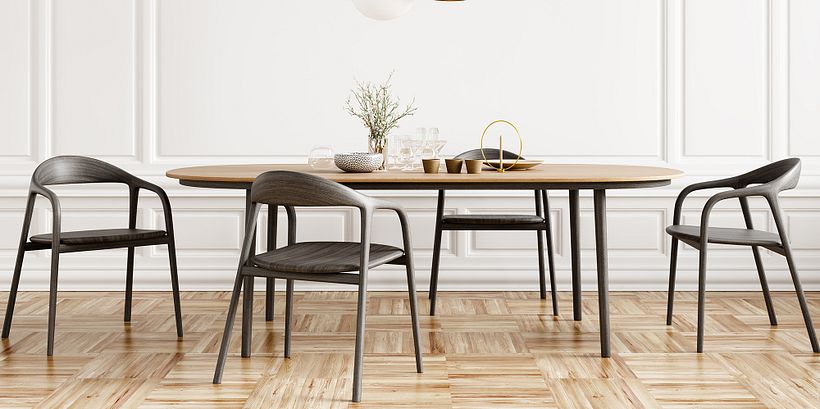
In the world of interior design, tables are an essential element to enhance the aesthetics of a room. The options are varied and range from the classic large center table to coffee tables with various heights.
The large center table is perfect for large rooms, as it becomes the focal point of the space. Its imposing size allows it to stand out and give a sophisticated touch to the environment. In addition, it offers a large surface to place decorative objects, such as vases, books, or photographs.
On the other hand, coffee tables with various heights are a modern and versatile alternative. These tables offer different levels, allowing you to create interesting visual compositions. You can place plants, trays or decorative elements on each of the levels, thus giving a dynamic and unique touch to the room.
In addition, we cannot forget the use of a centerpiece to enhance the aesthetics of the room. A well-chosen centerpiece can be the perfect complement to any type of table. You can opt for a floral arrangement, a sculpture, or even a tray with candles and decorative stones. The key is to choose a centerpiece that fits the style and theme of the room.
· Chairs
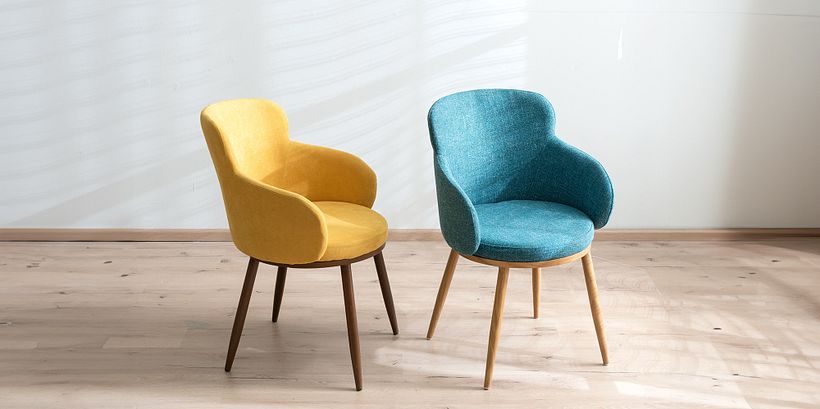
Chairs are much more than just seating in a living room; they are an expression of style and functionality that complements the atmosphere of the space. When selecting chairs for your living room, consider both comfort and design.
To create a cohesive look, look for chairs that match the sofa in both color and texture. Chairs with soft upholstery and elegant patterns can add a touch of sophistication, while those with minimalist design and clean lines can create a modern, spacious feel. Also, think of versatility: lightweight, easy-to-move chairs are ideal for adapting to different situations, such as social gatherings or relaxing moments alone.
How to Illuminate the Living Room?
Proper lighting in the living room is essential to create a cozy and functional environment. In this space, where we spend quality time with family and friends, it is important to have different light sources that allow us to adapt the intensity and tone according to our needs and activities. In addition, the lighting in the living room can enhance the decor and highlight the key elements of the room, such as furniture, paintings or plants.
Types of Lighting for Living Rooms
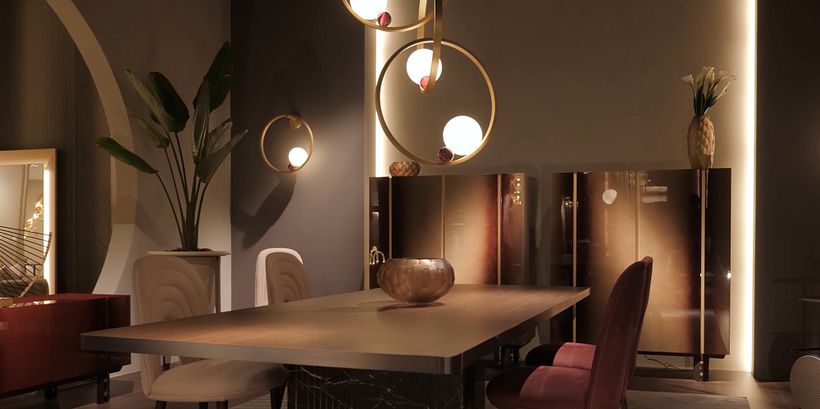
Floor lamps are an excellent choice for providing general lighting in the living room. In addition to being a practical light source, they also add style and elegance to the space. On the other hand, table lamps are ideal for creating focused points of light, perfect for highlighting specific areas such as side tables or reading nooks.
It is also advisable to incorporate direct artificial lights in the living room. These lights can be used to illuminate certain areas of interest or to highlight decorative objects such as pictures or shelves.
Another important aspect to consider is the use of dimmers. These devices allow the amount of light to be adjusted according to the needs of the moment, thus creating different atmospheres in the room and allowing the lighting to adapt to the different activities taking place in the space.
Floor Lamps vs. Hanging Lamps
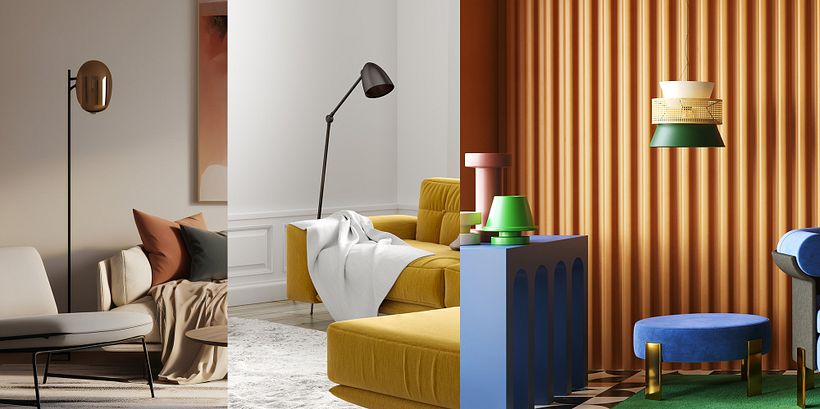
Floor lamps and pendant lamps are two popular choices in interior lighting. The main difference between them lies in their location and functionality. Floor lamps, as their name suggests, are placed on the floor and provide direct upward light. On the other hand, pendant lamps are installed on the ceiling and provide downward light.
As for the recommended location, floor lamps are ideal for illuminating dark corners or for providing additional light in reading or working areas. As for pendant lamps, they are perfect over dining tables, kitchen counters or in entryways to provide a cozy ambiance.
In terms of available styles, both floor lamps and pendant lamps offer a wide variety. From modern and minimalist designs to more traditional and rustic styles. There are options for all tastes.
In terms of advantages, floor lamps are easy to move and relocate according to lighting needs, while pendant lamps provide more centralized and focused lighting.
Finally, the disadvantages of floor lamps include their floor space occupation, while pendant lamps may require a more complex installation.
This tour through the fascinating world of living room decor is just the beginning of your own interior design adventure. If you want to delve even deeper, we invite you to explore the Decorating your home, step-by-step course on Domestika. Here, you will not only hone your skills, but also learn how to bring your ideas to life, transforming any space into a reflection of your personality and unique style.




0 comments